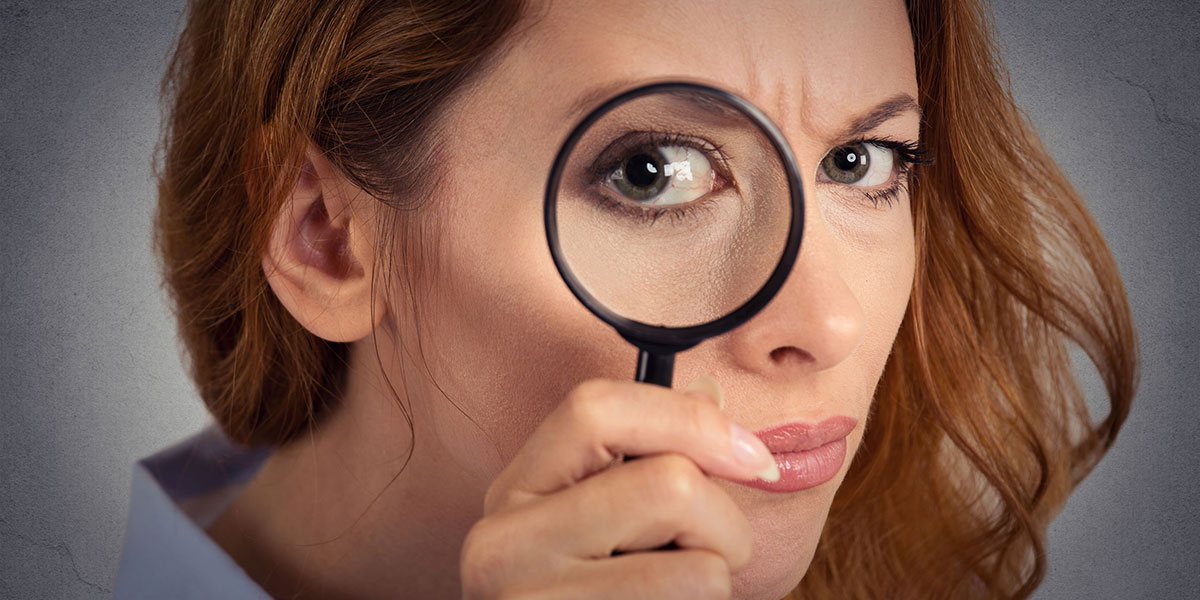
How do I know if I have mold? Where do I look for it? Is mold harmful? Who can help me?
Have you been seeing the news reports about the health risks related to mold exposure? It probably won’t shock you to learn that moldy places in a house can lead to a stuffy nose, watery eyes, wheezing and other allergic reactions. But mold is also associated with many serious, chronic health issues – ranging from asthma flareups to insomnia, anxiety, depression, memory problems, and more.
There are a variety of ways to give mold the heave-ho. But first you need to know if mold really is present in your home. In this article, we share tips on finding mold. Point out some of the unexpected places toxic mold hides. And suggest the safest, surest method to get rid of this pesky fungus.
Is my home a breeding ground for mold?
To discover if mold is multiplying at your place, take a look around. Be on the lookout for gray, green or black splotches. Many of us walk past a moldy patch on a bathroom wall, shower curtain or basement floor without thinking much about it. Or maybe you have an old water stain and assume that since it looks dry that mold isn’t present. But sometimes it is. And wouldn’t it be nice to know for sure?
Next, follow your nose. A damp, musty aroma is a tell-tale sign that mold might be hidden out of sight. However, mold has a different scent depending on what kind of mold it is, and what type of surface it’s growing on. Plus, everyone isn’t a mold bloodhound – many of us can’t smell a thing.
Third, if you or a loved one is prone to allergies, it’s possible the symptoms are related to mold. You see, while it may appear that mold is just hanging out, it might be on the move. When mold gets stirred up, it throws off microscopic particles called spores. These invisible mold spores are easily inhaled by you and unsuspecting family members, and some people experience allergic reactions.
Finally, do a little detective work. An unlikely place to detect a mold problem is on your utility bill. An unexpected spike might mean there’s a silent water leak somewhere in your home. And it’s not rare to find mold growth at the site of these leaks.
Has your home been subjected to water damage?
Even if you can’t see it or smell it, mold may still be present. If mother nature hits your home with a heavy rain or flooding, water can get trapped in places you can’t see or don’t notice. Or maybe little Billy put the stopper in the sink and turned on the faucet to see what would happen. By the time you discover it, a mini-tsunami is rolling across your bathroom floor. Despite your best efforts to mop up after him, moisture might have seeped into the walls through a crack. Where it sits. And throws out the welcome mat for mold.
Mold loves living in places that are hidden from view. Crawlspaces and attics, or walls that are adjacent to plumbing, are just a few of the preferred living spaces for mold. Really, anyplace that’s shady where the air is still should be considered hospitable territory.
The point is this: If your home received a soaking recently, make sure you don’t have mold. If you suspect you might, the only way to know for certain is to get it professionally tested.
Your mold detection check list.
Here are 11 likely places to check for the presence of mold:
- Your shower and tub
- The sink and toilet
- Under carpeted bathroom floors
- Beneath the kitchen sink
- In and around the stove
- Windows and window sills
- Air conditioning and heating units and vents
- Fireplace and chimney
- Attic or Basement
- Check to see if your gutters are blocked, which can cause water to enter your home
- Garage
Think you’ve found mold? Here’s what to do about it.
If you believe you might have a mold problem, the only way to know for sure is to contact a professional mold testing service. They have the testing equipment and expertise to find out for sure. Should the presence of mold be confirmed, many experts recommend against DIY removal methods. The surest, safest way to say farewell to this nasty fungus is with a qualified mold remediation firm.
References:
https://moldpedia.com/mold-testing
https://homeguides.sfgate.com/detect-mold-apartment-8307.html
https://molekule.com/blog/11-common-places-check-mold-home/
https://www.health.com/allergy/mold-test-smell-signs
https://www.moneycrashers.com/detect-test-get-rid-of-home-mold-exposure/
https://cleancrawls.com/signs-may-toxic-mold-crawl-space-attic/


Leave A Comment